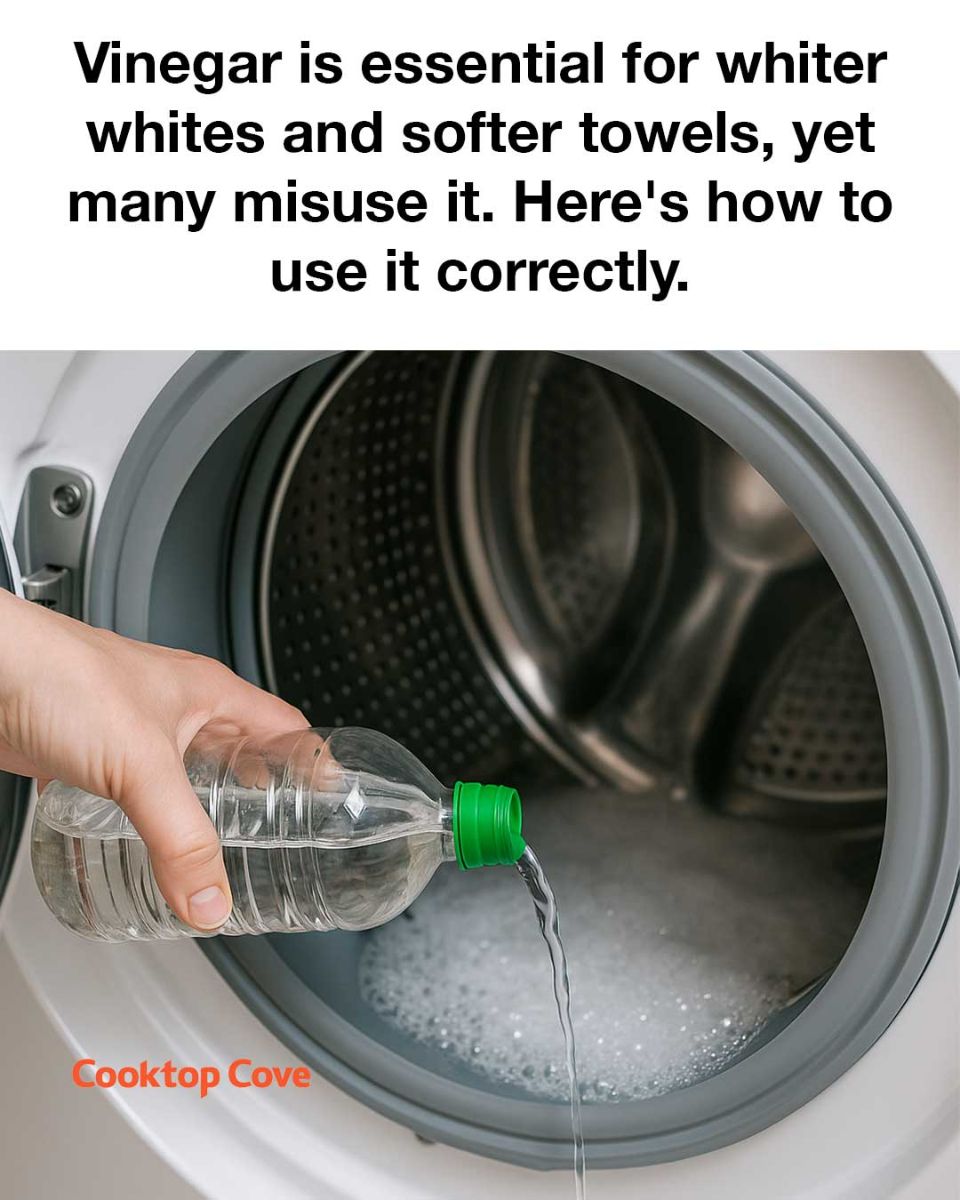Vinegar is essential for whiter whites and softer towels, yet many misuse it. Here’s how to use it correctly.
Holly Owens
Contributing Writer
Print this recipe
Vinegar is a staple in many households, known for its versatility and natural cleaning properties. However, its potential in the laundry room is often underestimated or misused. When used correctly, vinegar can transform your laundry routine, making whites brighter and towels softer without the need for harsh chemicals.
Despite its benefits, many people are unsure of how to incorporate vinegar into their laundry effectively. Misuse can lead to less than desirable results, such as lingering odors or fabric damage. This article will guide you through the proper use of vinegar in laundry, ensuring you get the best results every time.
1. The Magic of Vinegar in Laundry
Vinegar, particularly white distilled vinegar, is a natural fabric softener and deodorizer. Its acidic nature helps to break down detergent residues and mineral deposits from hard water that can cause fabrics to feel stiff. Adding 1/2 cup of vinegar to the rinse cycle can help remove these residues, leaving clothes feeling softer and fresher.
Moreover, vinegar’s natural acidity can help to dissolve soap scum and mineral deposits, which can accumulate in washing machines over time. This not only keeps your machine running more efficiently but also prevents these residues from transferring to your clothes.
2. How Vinegar Whitens Whites
Vinegar is particularly effective at whitening whites due to its ability to break down and dissolve residues that can cause fabrics to appear dull. To whiten whites, add 1 cup of white vinegar to the wash cycle along with your regular detergent. This helps to lift and remove any dingy buildup, restoring the fabric’s original brightness.
For an extra whitening boost, soak whites in a solution of 1 part vinegar to 4 parts water for a few hours before washing. This pre-treatment can help to tackle stubborn stains and yellowing, ensuring your whites come out looking their best.
3. Achieving Softer Towels with Vinegar
Towels can become stiff and scratchy over time due to detergent buildup and hard water minerals. Vinegar acts as a natural fabric softener, breaking down these residues and restoring the towels’ softness. Simply add 1/2 cup of vinegar to the rinse cycle when washing towels.
For particularly stiff towels, consider soaking them in a vinegar solution before washing. Mix 1 cup of vinegar with 1 gallon of warm water and let the towels soak for 30 minutes. This pre-treatment can help to loosen and dissolve stubborn residues, resulting in softer, more absorbent towels.
4. Eliminating Odors: Vinegar’s Secret Power
Vinegar is a powerful deodorizer, capable of neutralizing odors rather than just masking them. This makes it particularly effective for gym clothes, pet bedding, and other items prone to strong smells. Add 1 cup of vinegar to the rinse cycle to help eliminate lingering odors.
For particularly stubborn odors, consider soaking the affected items in a vinegar solution before washing. Mix 1 part vinegar with 3 parts water and let the items soak for at least 30 minutes. This can help to break down odor-causing bacteria and leave your clothes smelling fresh.
5. Brightening Colors with Vinegar
While vinegar is often associated with whitening, it can also help to brighten colored fabrics. The acidic nature of vinegar helps to remove dulling residues that can cause colors to fade. Add 1/2 cup of vinegar to the rinse cycle to help maintain vibrant colors.
For an extra boost, consider adding vinegar to the wash cycle along with your regular detergent. This can help to lift and remove any residues that may be dulling the fabric’s colors, ensuring your clothes look as vibrant as the day you bought them.
6. The Correct Way to Add Vinegar During the Rinse Cycle
To maximize the benefits of vinegar in your laundry, it’s important to add it at the right time. Vinegar should be added during the rinse cycle, not the wash cycle. This ensures that it can effectively break down and remove detergent residues without interfering with the cleaning power of your detergent.
If your washing machine has a fabric softener dispenser, you can add vinegar directly to it. Otherwise, wait until the rinse cycle begins and pour the vinegar directly into the drum. This will help to ensure even distribution and optimal results.
7. Pre-Treating Stains with Vinegar
Vinegar can be an effective pre-treatment for a variety of stains, including grass, coffee, and sweat. To pre-treat stains, mix equal parts vinegar and water and apply the solution directly to the stain. Let it sit for 10-15 minutes before washing as usual.
For tougher stains, consider making a paste with vinegar and baking soda. Apply the paste to the stain and let it sit for 15-30 minutes before washing. This combination can help to lift and dissolve stubborn stains, making them easier to remove during the wash cycle.
8. Common Mistakes When Using Vinegar in Laundry
